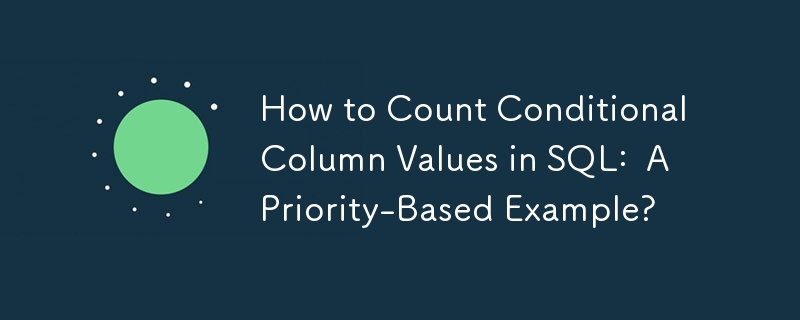Found a total of 10000 related content

How to create a 'read more' link with CSS?
Article Introduction:The core of creating a "Readmore" link is to hide part of the text through CSS and switch classes with JavaScript to display the full text; 2. Use HTML structure to include preview text and hidden text, and control display through .active class; 3. Set .hidden-text{display:none} and cooperate with .read-more-container.active.hidden-text{display:inline} to achieve visible and hidden; 4. JavaScript adds click events to buttons, switch active class and change the button text to "Readless" or "Readmore"; 5. Optional pure
2025-07-29
comment 0
699

How to create a user in mongodb
Article Introduction:There are two ways to create a MongoDB user: Use the mongoDB shell: Use the use command to switch to the admin database. Use the db.createUser command to create a user, specifying the user name, password, and role. Using MongoDB Compass: Expand the "Security" section and click the "Users" tab. Click the "Add User" button, enter the user name, password and select a role.
2025-04-12
comment 0
735
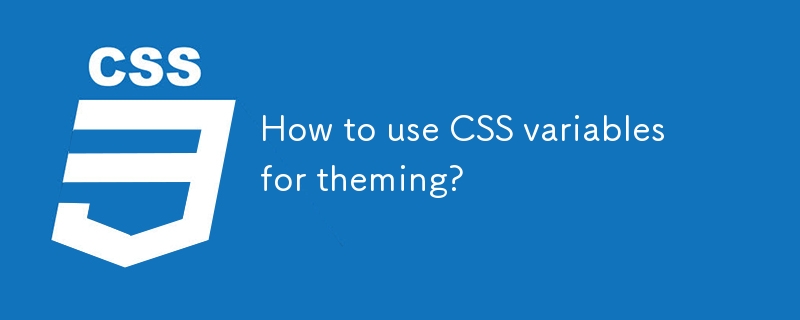
How to use CSS variables for theming?
Article Introduction:The core of using CSS variables to achieve topic switching is to define the basic variables and organize the topic structure, and dynamically switch through class names or attributes. The steps are as follows: 1. Define basic variables such as colors, fonts, etc. in root; 2. Create classes that cover variables for different themes (such as dark and light colors); 3. Call variables using var() in CSS rules; 4. Switch class names or attributes through JavaScript to achieve theme changes; 5. Extend variables to font size, rounded corners, shadows and other style attributes. This clear structure and easy maintenance lies in reasonable naming and scope control.
2025-07-15
comment 0
685

How to implement a 'dark mode' toggle using HTML, CSS, and JS?
Article Introduction:How to add a dark mode toggle button to your website? First, use HTML to build the structure, then use CSS to define two theme styles, and finally implement the switching function through JavaScript. 1. Create a basic layout: Create an HTML file containing toggle buttons and content, and link CSS and JS files. 2. Define the theme in CSS: Use variables to set the color scheme of default and dark modes and apply it to page elements. 3. Add JavaScript switching logic: Switch the dark mode class on the body by clicking events, and save user preferences with localStorage.
2025-07-16
comment 0
261

CSS tutorial for creating loading spinners and animations
Article Introduction:There are three ways to create a CSS loading rotator: 1. Use the basic rotator of borders to achieve simple animation through HTML and CSS; 2. Use a custom rotator of multiple points to achieve the jump effect through different delay times; 3. Add a rotator in the button and switch classes through JavaScript to display the loading status. Each approach emphasizes the importance of design details such as color, size, accessibility and performance optimization to enhance the user experience.
2025-07-07
comment 0
847
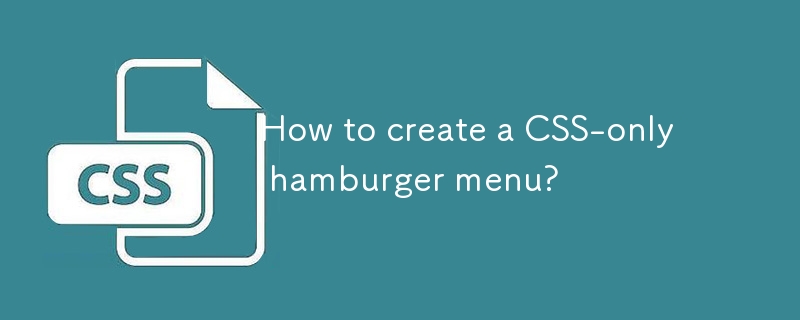
How to create a CSS-only hamburger menu?
Article Introduction:Yes, you can create a hamburger menu with pure CSS. The specific steps are as follows: 1. Use hidden checkbox as a switch, simulate the hamburger icon through label, and use ul to build a navigation menu; 2. Use CSS to style three spans into hamburger icons, and use transform to achieve rotation and hide animations through transform in the checked state to form the "X" closing effect; 3. Use the ~ brother selector to control the display of nav-menu, initially hide the menu, expand it through scaleY when checked, and cooperate with media query to hide the hamburger button on the large screen and display the horizontal menu; 4. Add aria-label to improve accessibility and ensure that keyboard navigation and screen readers are compatible; this solution does not require
2025-08-01
comment 0
483

Building Interactive Guides with HTML `dialog`
Article Introduction:The key to building interactive guides using HTML elements is to understand how their display control logic interacts with users. 1. Define the tag and use JavaScript to control the display. Create modal popups through .showModal() or .show() to create non-modal popups; 2. Implement multi-step guidance to update content dynamically or switch multiple, such as maintaining an array of steps and updating the prompt text every time the button is clicked; 3. Pay attention to compatibility issues, especially in Safari, limited support is required, and it is recommended to introduce polyfills or make compatibility judgments; 4. Custom styles can be customized through CSS, including width, margins, rounded corners, shadows, etc., and note::backdrop only takes effect in modal mode. Master these key points
2025-07-18
comment 0
845

Create and manage multiple project workspaces in VSCode
Article Introduction:Create and manage multiple project workspaces in VSCode through the following steps: 1. Click the "Manage" button in the lower left corner, select "New Workspace", and decide the save location. 2. Give the workspace a meaningful name, such as "WebDev" or "Backend". 3. Switch the project in Explorer. 4. Use the .code-workspace file to configure multiple projects and settings. 5. Pay attention to version control and dependency management to ensure that each project has .gitignore and package.json files. 6. Clean useless files regularly and consider using remote development skills
2025-05-29
comment 0
803
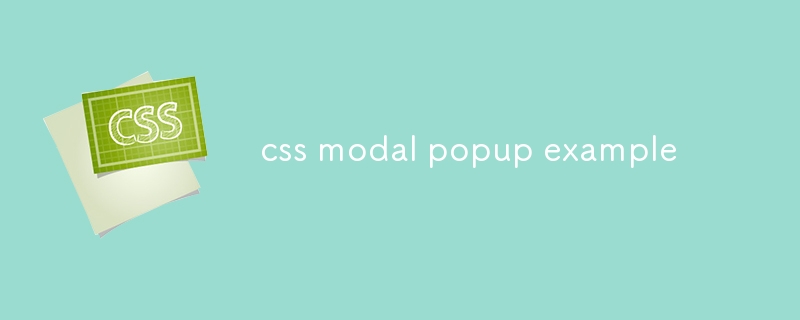
css modal popup example
Article Introduction:Use pure CSS to implement modal pop-up windows to control the visible and hidden checkbox. 1. Use input[type="checkbox"] as the status switch; 2. Use: checked .modal to control the display of modal boxes; 3. Use label[for] to trigger checking to achieve opening and closing; 4. Add @keyframes animation to achieve fade-in pop-up effect; 5. The close button or mask click area in the modal box can be bound to label control hidden. The entire process does not require JavaScript, is very compatible and has strong accessibility, and is suitable for static pages or lightweight interactive scenarios.
2025-07-28
comment 0
911

Vanilla Javascript: Creating Animated Sticky Navigation Menu
Article Introduction:Core points
Create an animated sticky navigation menus without the need for a jQuery plugin using pure JavaScript, CSS, and HTML. The menu is designed to slide out of view when scrolling down and slide back into view with a translucent effect when scrolling up.
This process involves setting up the basic HTML structure, applying styles to main elements, and then animateing the menu. The animation is triggered by attaching the event handler to the scroll event and using CSS transformation to adjust the position and appearance of the menu according to the scrolling direction.
This custom solution provides more design flexibility and allows easy customization to be done according to specific needs. The end result is a dynamic interactive navigation menu that enhances the user experience.
Web navigation menu design needs to consider many factors, such as dishes
2025-02-16
comment 0
1163

How to implement a dark mode theme switcher in Vue
Article Introduction:Create a theme switching component, use the checkbox to bind the isDarkMode state and call the toggleTheme function; 2. Check localStorage and system preferences in onMounted to initialize the theme; 3. Define the applyTheme function to apply the dark-mode class to the html element to switch styles; 4. Use CSS custom properties to define bright and dark variables, and overwrite the default styles through the dark-mode class; 5. Introduce the ThemeSwitcher component into the main application template to display the toggle button; 6. Optionally listen to prefers-color-scheme changes to synchronize the system theme. This solution uses Vue
2025-08-02
comment 0
644
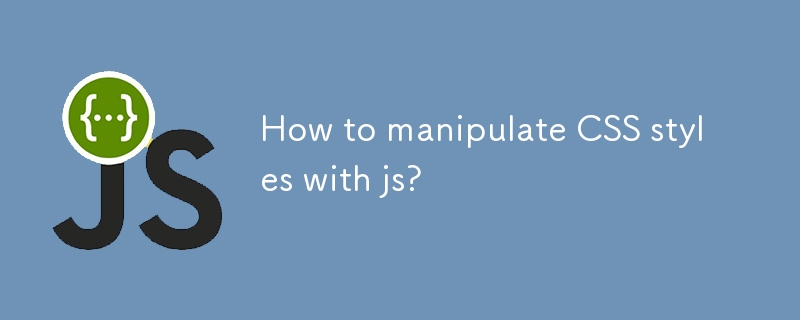
How to manipulate CSS styles with js?
Article Introduction:There are four main methods for JavaScript to operate CSS: First, modify the inline style through element.style, and use camel name to set style attributes, such as box.style.backgroundColor; second, use classList to add, remove or switch class names to achieve easier maintenance state control; third, use window.getComputedStyle to obtain the final applied style of the element, which is read-only; fourth, you can dynamically create style elements or insert new rules into the style sheet using insertRule, which is suitable for dynamic themes and other scenarios.
2025-07-02
comment 0
1006

Embed Interactive jsFiddle Snippets on your Web Page
Article Introduction:Embed interactive jsFiddle code snippets on web pages to make your web page more interactive! This article will guide you how to implement this feature easily.
step
Visit jsfiddle.net to create your code snippet.
Click "Share" > "Embed Code" (embed as an iframe) in the menu bar.
Copy the generated iframe code into your webpage HTML.
Demo
Here is a demonstration of jsFiddle embedding. You can switch options such as js, css, etc. and run the code in real time on the page, just click the play button!
Enjoy the fun of jsFiddle! You may also be interested in:
Hide your jQuery source code
J
2025-02-25
comment 0
1005
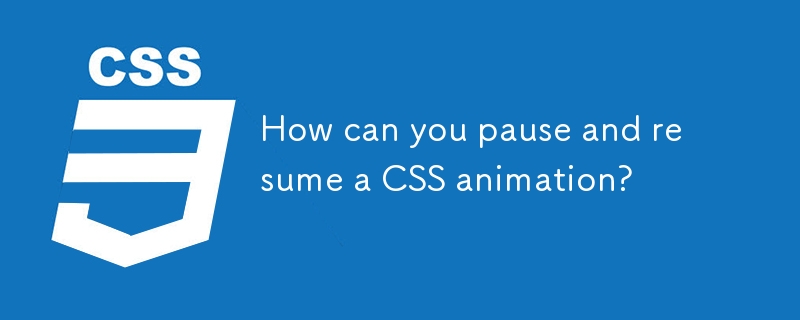
How can you pause and resume a CSS animation?
Article Introduction:To pause and restore CSS animation, the most direct way is to dynamically switch the animation-play-state attribute using JavaScript. Controlling this property through JavaScript allows pause and playback to be achieved without restarting the painting. The specific steps include: 1. Add an event listener (such as button click); 2. Check the current animation status; 3. Dynamic switching status. In addition, if you only need to pause the animation during hover, you can implement it through the :hover pseudo-class combined with @keyframes, but this method is suitable for simple interactions and is not suitable for complex logic. For multiple animations or more complex scenes, you can process animations by index, reset animation state or manage states with CSS variables, and pay attention to performance
2025-06-30
comment 0
690

How to create a multi-level dropdown in Bootstrap navbar?
Article Introduction:To create a multi-level drop-down menu in the Bootstrap navigation bar, 1. You need to build a multi-level menu through a nested <ul> structure; 2. Add a custom CSS to control the submenu position, such as setting the relative positioning of .dropdown-submenu and the left offset of .dropdown-menu; 3. Use data-bs-toggle="dropdown" or custom JS to implement the submenu expansion logic, such as clicking to switch the display status; 4. Optimizing mobile interaction, it is recommended to click to expand, limit the levels, and consider using the folded menu to adapt to touch screen operations.
2025-07-21
comment 0
925

How to use multiple desktops or 'Spaces' on macOS?
Article Introduction:Using macOS's multi-desktop capabilities (Spaces) can significantly improve work efficiency. To create a desktop, you can enter MissionControl through the Control arrow and click the " " button. You can add up to a dozen; to delete a desktop, you also need to enter MissionControl and click "x" in the upper left corner of the desktop, but the Space corresponding to the full-screen application can only be merged by exiting the full-screen. Quickly switch desktops can be swiped left and right by Control left and right arrows or the trackpad three/four fingers, and can also automatically jump to the corresponding desktop when the Command Tab switches applications. The method to fix the application window to a specific desktop is to select the window and select the target desktop through the menu bar "AssignTo" to make
2025-06-24
comment 0
208
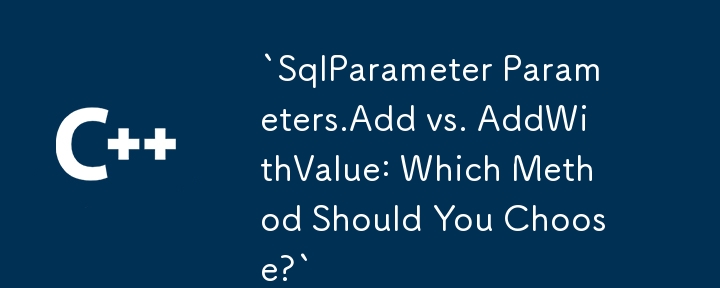

Dave The Diver: How To Catch Spider Crabs
Article Introduction:In Dave The Diver, there are some creatures that are not easy to catch. Or, catch alive that is. The spider crab is one of those very species, making it seem like the only way to bring these crustaceans back up to land is to viciously crack them up w
2025-01-10
comment 0
856

Prepare for Interview Like a Pro with Interview Questions CLI
Article Introduction:Prepare for Interview Like a Pro with Interview Questions CLI
What is the Interview Questions CLI?
The Interview Questions CLI is a command-line tool designed for JavaScript learners and developers who want to enhance their interview
2025-01-10
comment 0
1487


















